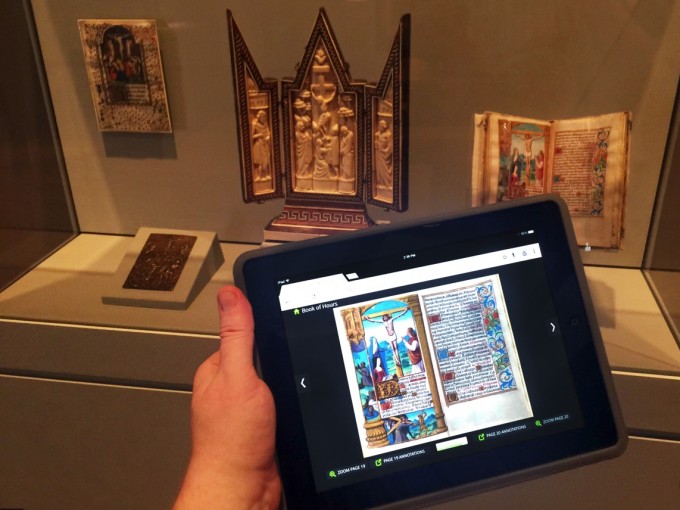The New Galleries: A Collection Come to Light
With the first major reconfiguration since the museum opened in 2005, the Nasher Museum unveiled a comprehensive and dynamic reinstallation of the collection. Highlighting 5,000 years of art, The New Galleries: A Collection Come to Light presented rotating installations of the museum’s extensive holdings. The eight galleries, and also the entrance to Wilson Pavilion, were permanently dedicated to the collection’s strengths, which include a variety of cultures and time periods. These galleries provided context for the collection while also illustrating a brief history of human creativity from different parts of the world. By August of 2016, the galleries were renamed The Collection Galleries.
Museum curators regularly change out works of art from the collection in all of the galleries.
The Ancient World covers a broad geographical and chronological reach, featuring works from ancient Egyptian, Greek and Roman cultures. Medieval Europe displays important architectural sculpture, devotional objects and stained glass from the Romanesque and Gothic periods. European Art, 1400-1900, illustrates cultural and aesthetic changes from the Renaissance to the dawn of the modern period through a variety of objects, paintings and sculptures.
American Art, 1800-1945, features portraiture from the early Republic, Hudson River School painting and Ash Can School works and examples of Regionalism.
One gallery, Modern Affinities, featured European and American modernist art alongside works by self-taught artists, illustrating connections between them. That gallery was refreshed with Selections from the Photography Collection in the fall of 2016.
Two galleries are dedicated to non-Western cultures: Art of the Americas, presenting ceramics, metalwork and textiles from Mesoamerica, and African Art, featuring many of the museum’s best masks, figural sculpture and beadwork from the African continent.
The new Incubator, to the right of the entrance, became a flexible gallery space for continuously changing faculty- and student-curated projects and thematic installations. The year’s Incubator installations included Full Exposure: Paul and Damon Mccarthy’s Pirate Party, Burk Uzzle: Southern Landscapes, The Fleeting Image: Four Contemporary Artists and Sharp Focus: Ansel Adams and American Photography.
The Nasher Museum’s Book of Hours (Workshop of Jean Bourdichon, c. 1490) is a fine example of 15th-century French manuscript production. It has 156 pages, including daily prayers for Christian devotion, a calendar of saints’ days and 13 full-page paintings, or miniatures, depicting religious scenes and vignettes associated with then-contemporary life. Now visitors can explore these 13 richly illustrated pages in detail with a new digital program. The Nasher Museum’s Book of Hours is on view in the European room of The New Galleries. Visitors can also explore the book online; it is compatible with smart phones, tablets and desktop/laptop computers.
The Nasher Museum presents “Medieval Color Comes to Light,” an interactive light painting application that allows visitors to project vibrant colors onto 800-year-old limestone sculptures depicting four disciples of Christ. The digital interactive display reveals bright pigments that have been worn away by the centuries. The project team of Duke faculty and students, “Lives of Things,” was led by professor Mark Olson from the Department of Art, Art History & Visual Studies, and post-doctoral researcher Mariano Tepper from Computer and Electrical Engineering, in collaboration with professors Caroline Bruzeluus (AAHVS) and Guillermo Sapiro (CEE).
Bonifacio de’ Pitati and workshop, Virgin and Child with Saints Elizabeth, Lucy, the Child Baptist, Peter and Catherine (detail), c. 1545. Oil on canvas, 44 x 68 inches (111.8 x 172.7 cm). Collection of the Nasher Museum of Art at Duke University. Anonymous gift, 1991.7.1. Photo by Peter Paul Geoffrion.


